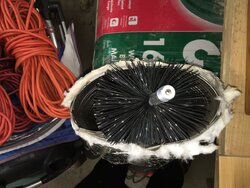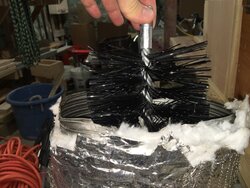First season running an ovalized insulated armor flex liner from Olympia. I'm itching to get up on the roof to check how it looks.
Checking out the ovalized brush they gave me for cleaning I noticed that it is much smaller than the liner. It covers the liner depth (shortest dimension of the oval) but is short on the width.
I figured they would send me an ovalized brush that is the same size as my liner. I guess I might be able to brush one side and then the other but I feel like this procedure will miss spots. Should I order another one?
Maybe order a larger brush and cut it down to the dimension of my oval?


Checking out the ovalized brush they gave me for cleaning I noticed that it is much smaller than the liner. It covers the liner depth (shortest dimension of the oval) but is short on the width.
I figured they would send me an ovalized brush that is the same size as my liner. I guess I might be able to brush one side and then the other but I feel like this procedure will miss spots. Should I order another one?
Maybe order a larger brush and cut it down to the dimension of my oval?


Last edited by a moderator:

